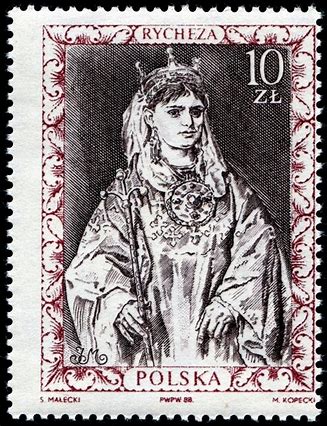Queen of Poland
A niece of Emperor Otto III, who was instrumental to her betrothal to the son and heir of the King of Poland.
Her brother Otto, the last male representative of the Ezzonen dynasty, died on 7 September 1047. At his funeral in Brauweiler Abbey, according to Bruno of Toul (later Pope Leo IX), she put her fine jewellery on the altar and declared that she would spend the rest of her life as a nun, to preserve the memory of the Ezzonen dynasty. Brauweiller Abbey had been founded and endowed in 1024 by her parents, who were buried there, as were her brothers Liudolf, Count Palatine of Lotharingia (d. 1031) and Otto II, Duke of Swabia (d. 1047).
A charter dated 17 July 1051 noted that Richeza participated in the reorganization of the Ezzonen properties with her sister Theophanu, Abbess of Essen, and her brother, Hermann II, Archbishop of Cologne. This reorganization, which apparently emanated from the hope that Hermann II would survive his siblings, failed, because he died in 1056. From Ezzo’s ten children only Richeza and Otto had children. None of these children was in a position of real power over the Ezzonen inheritance.
Richeza formally renounced her possessions in Coburg and Saalfeld to the
of the Diocese of Würzburg, while reserving the lifelong use of the lands. She maintained direct rule over Coburg, Saalfeld and seven other locations in the Rhineland with their additional incomes. Richeza died on 21 March 1063 in Saalfeld.
